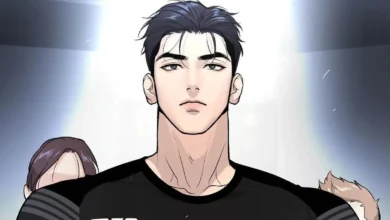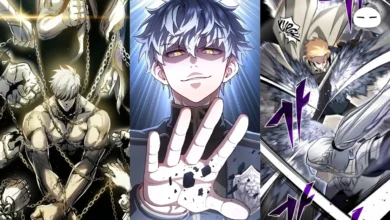Who is the author of Vagabond Manga and what is his background?

Introduction
Vagabond Manga is not just a tale; it’s a journey into the heart of samurai culture and the human spirit. Created by renowned manga artist Takehiko Inoue, this series has captivated readers worldwide with its intricate storytelling and stunning artistry. Set against the backdrop of Japan’s tumultuous Sengoku period, “Vagabond” offers a compelling portrayal of Miyamoto Musashi, a historical figure whose legendary exploits have inspired countless adaptations. Inoue’s adaptation of the classic novel “Musashi” by Eiji Yoshikawa brings this story to life with a fresh and poignant perspective, blending historical accuracy with profound philosophical themes.
This manga is celebrated for its exceptional art and narrative depth, making it a landmark in the manga genre. “Vagabond” stands out not only for its visual beauty but also for its exploration of themes such as personal growth, the nature of violence, and the quest for inner peace. As we delve into the creation, themes, and impact of “Vagabond Manga,” you’ll discover why this series remains a beloved masterpiece in the world of manga.
The Creation of Vagabond Manga
Origins and Inspiration
The origins of Vagabond Manga are deeply rooted in Japan’s rich historical and literary traditions. The series is based on Eiji Yoshikawa’s novel “Musashi,” which recounts the life of Miyamoto Musashi, a famed samurai renowned for his unmatched skill in swordsmanship. Takehiko Inoue, inspired by Yoshikawa’s work, sought to bring this legendary figure to a new audience through his manga. Inoue’s adaptation is distinguished by its meticulous attention to historical detail and its innovative approach to storytelling.
Inoue’s vision was to create a manga that not only entertained but also provided a window into the samurai ethos and the period’s complex social dynamics. His deep respect for the source material is evident in his dedication to historical accuracy, from the depiction of weaponry and battle strategies to the nuanced portrayal of samurai philosophy. This commitment to authenticity is what sets “Vagabond” apart from other historical manga, making it a compelling read for both manga enthusiasts and history buffs.
Artistic Style and Techniques
Inoue’s artistic style in Vagabond Manga is a visual feast that enhances the narrative’s emotional impact. His illustrations are known for their dynamic compositions and intricate details, which bring the samurai world to life. The use of brushwork and ink techniques creates a raw and visceral quality, reflecting the intensity of the battles and the inner turmoil of the characters. Each panel is crafted with precision, capturing the essence of the historical setting and the characters’ psychological depth.
The manga’s visual storytelling is complemented by its use of sparse dialogue, allowing the art to convey much of the story’s emotion and tension. Inoue’s ability to capture subtle expressions and dramatic moments through his artwork is a testament to his skill as a manga artist. This synergy between art and narrative not only enriches the reader’s experience but also underscores the themes of struggle, perseverance, and enlightenment that permeate the series.
Key Themes and Characters
Central Characters
At the heart of Vagabond Manga are its richly developed characters, particularly Miyamoto Musashi and his rival Sasaki Kojiro. Musashi, the series’ protagonist, embarks on a journey of self-discovery and mastery. Inoue portrays Musashi not as a mere swordsman but as a complex individual grappling with his own demons and aspirations. His evolution from a brash young warrior to a profound philosopher is central to the story, reflecting the manga’s exploration of personal growth and the pursuit of enlightenment.
Sasaki Kojiro, Musashi’s primary rival, is equally compelling. Known for his exceptional swordsmanship and strategic mind, Kojiro serves as both a challenge and a mirror to Musashi’s own journey. The dynamic between these two characters drives much of the narrative, highlighting themes of rivalry, honor, and the quest for perfection. Supporting characters, each with their own stories and motivations, further enrich the manga, adding layers of complexity to the narrative and thematic exploration.
Themes Explored
Vagabond Manga delves into several profound themes that resonate deeply with readers. One of the central themes is the quest for self-discovery. Musashi’s journey is not just a physical battle but a quest to understand himself and his place in the world. This theme is intertwined with the philosophy of the samurai code, which emphasizes discipline, honor, and the pursuit of mastery.
The manga also explores the nature of violence and peace. Through its depiction of intense battles and philosophical dialogues, “Vagabond” questions the true meaning of strength and the consequences of wielding power. This exploration is not merely about physical combat but also about the inner conflicts that define the characters’ paths. Inoue’s portrayal of these themes invites readers to reflect on their own beliefs and values, making “Vagabond” a thought-provoking and enriching read.
Reception and Impact
Critical Acclaim
Since its debut, Vagabond Manga has garnered widespread acclaim from critics and readers alike. The series is praised for its exceptional storytelling, intricate character development, and stunning artwork. Manga and anime communities have lauded Inoue’s ability to blend historical accuracy with compelling narrative, making “Vagabond” a standout in the genre. The manga has received several awards and recognitions, solidifying its place as a modern classic.
The critical reception highlights not only the manga’s artistic and narrative strengths but also its influence on the broader manga landscape. “Vagabond” is often cited as an example of how manga can transcend its genre boundaries to deliver a universally resonant story. This acclaim underscores the manga’s impact and enduring appeal.
Influence on Popular Culture
Vagabond Manga has significantly influenced popular culture beyond the realm of manga. The series has inspired adaptations, including anime and live-action films, which have introduced the story to new audiences. These adaptations, while varying in their interpretations, reflect the manga’s widespread appeal and its ability to resonate across different media.
The impact of “Vagabond” extends to contemporary manga and storytelling, where its themes and artistic techniques have influenced other creators. The manga’s exploration of philosophical and historical themes has set a high standard for narrative depth and character development in manga. As a result, “Vagabond” continues to be a touchstone for both fans and creators, demonstrating its lasting significance in the world of manga and beyond.
Collecting and Reading Vagabond Manga
Editions and Formats
For collectors and new readers alike, Vagabond Manga is available in various editions and formats. The series is published in tankōbon format, which is the standard for manga volumes. Additionally, there are deluxe editions that feature high-quality printing and additional content, such as author notes and behind-the-scenes insights. These editions offer a more immersive experience for fans and collectors.
Finding these editions can be a rewarding experience, as many collectors seek out rare or limited releases. Online retailers and specialty bookstores often carry different editions of “Vagabond,” making it accessible for readers interested in exploring the series. Whether you are a new reader or a long-time fan, the availability of various formats ensures that you can enjoy the series in the way that best suits your preferences.
Tips for New Readers
For those new to Vagabond Manga, starting the series can be both exciting and overwhelming due to its depth and complexity. A good starting point is to begin with the first volume, which sets the stage for Musashi’s journey and introduces key characters. It’s helpful to approach the series with an understanding of its historical context, as this adds depth to the reading experience.
Engaging with supplementary materials, such as background articles or discussions about the samurai era, can enhance your appreciation of the manga. As you progress through the series, pay attention to the themes and character development, as these elements are central to the story’s impact. Taking the time to explore these aspects will enrich your reading experience and deepen your connection to the world of “Vagabond.”
Conclusion
Vagabond Manga stands as a testament to the power of storytelling and art in manga. Through Takehiko Inoue’s masterful adaptation of Miyamoto Musashi’s life, the series offers a profound exploration of samurai culture, personal growth, and philosophical inquiry. Its combination of historical authenticity, compelling characters, and stunning visuals has solidified its place as a modern classic in the manga world. As readers embark on this journey through “Vagabond,” they are invited to reflect on their own values and aspirations, making the series a truly enriching experience.




